Play and Children with ASD (Autism Spectrum Disorder)
Published Friday, April 20, 2018At the beginning of 2018 we welcomed a very special Toy Expert to the Happy Up Crew: Amanda. She has spent the past 20 years as a therapist working with children with developmental disabilities and autism, as well as helping their families. We asked her to drop some knowledge on us about what these children need from their toys. We are truly grateful for her time and insights!

Play & Children with ASD
Children learn through play. Toys help them develop motor skills, muscles, creativity, communication skills, social skills, and emotional awareness. Playtime leads children to understand concepts of fairness and how to cooperate with others. One challenge for children with ASD (Autism Spectrum Disorder) or other developmental delays is a lack of understanding abstract concepts like “let’s play pretend”. These children tend to prefer toys that are functional like puzzles and building blocks. Or they may develop a fascination with one aspect of a toy like the spinning wheels on a truck.
It’s important to start where the child is. Provide toys that appeal to them then expand on that. Of course, every child is different. These are just some rough guidelines.
Sensory Play
Usually begins by 3-6 months of age. Children explore their surroundings with sustained interest. Sensory play involves engaging the senses. This type of play can be calm and independent. Look for toys that offer different textures, scents, and sounds.
Toys: Scratch n’ Sniff books, cloth books, sensory bands, fidget toys, sand and water tables
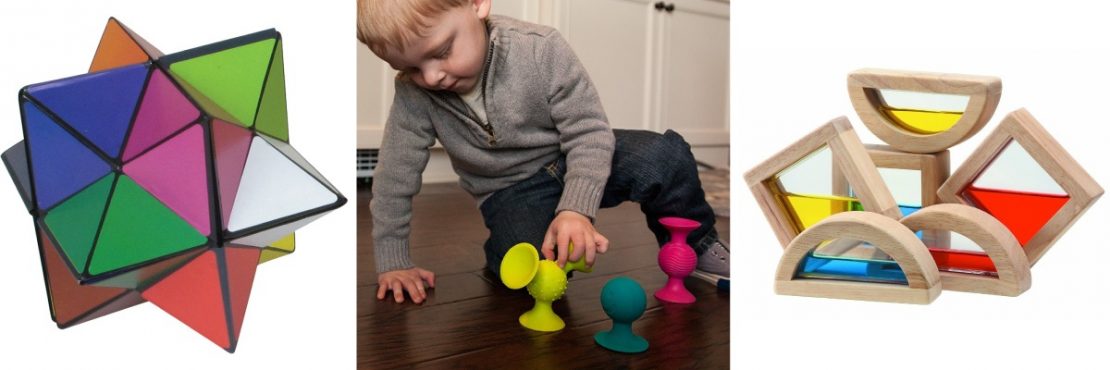
Cause and Effect Play
At this stage, children start to understand that their actions can make something happen. For example, an infant learns that shaking a rattle causes it to make sound. This stage is all about establishing “if this, then that”.
Toys: Pop-up toys, push button toys, Pop-up books, magnet mazes, marble towers, stomp rockets, SpinAgain
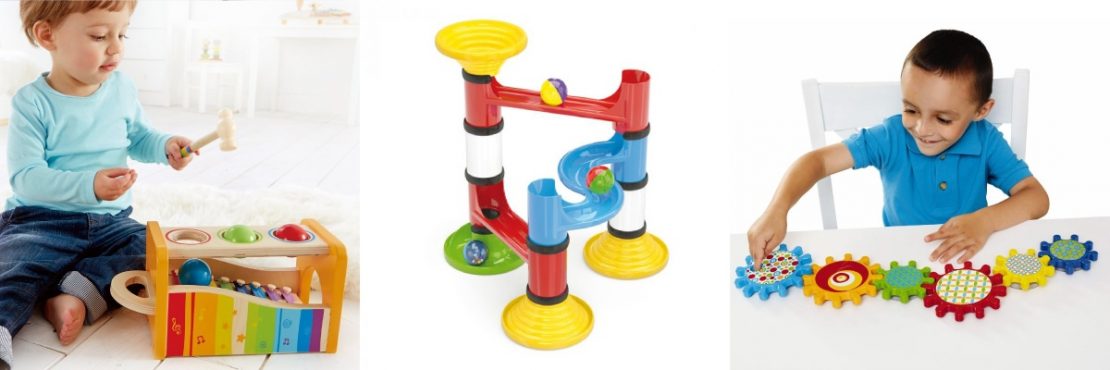
Functional Play
This stage can begin as early as 9 months of age. Children are using toys for their intended use. They roll balls instead of chewing on them. They push trains along a track and build with blocks.
Toys: Legos, Brio Trains, jigsaw puzzles, logic games, Shrink Art
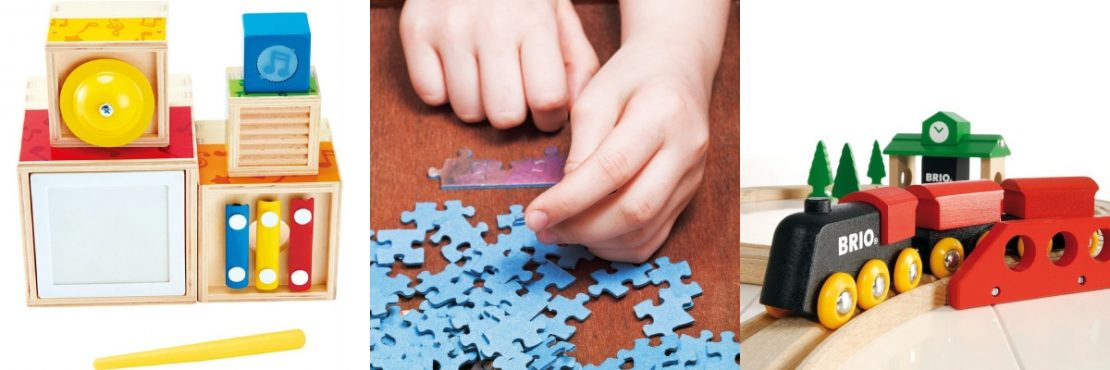
Pretend Play
This stage typically begins between 24-30 months of age. This is when a child’s imagination begins to guide play and interacting with their toys. For the ASD child, this type of play can be a challenge. Providing visual support and guidance to steer them through activities is helpful. Show the child how to push a toy car along a “street” on a playmat. Introduce characters like bus drivers and firefighters to help model social skills. Pretend food and kitchen items help teach functional living skills. Pretend play can also prepare the child for new experiences like a doctor visit.
Toys: Play food, dishes, and household items; toy cars and playmats; Playmobil figures; dolls and doll houses; stuffed animals; costumes
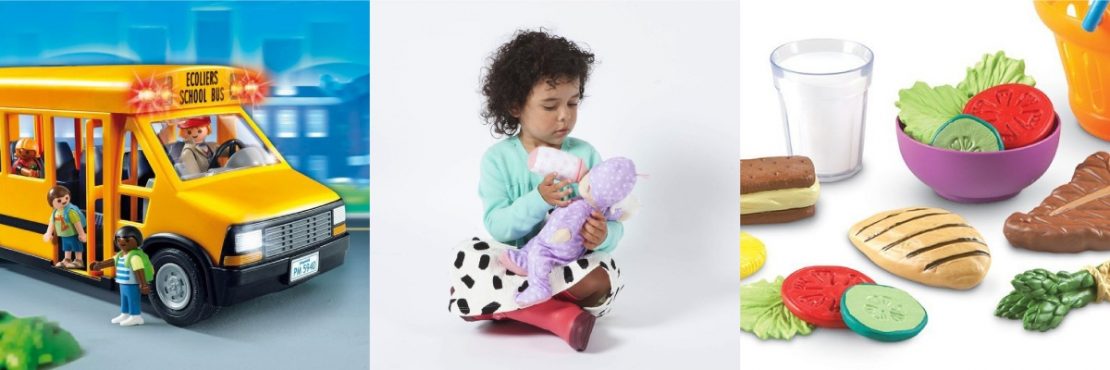
Cooperative Play
For children with ASD, this can be one of the hardest challenges. They may avoid participating in group activities, sports, and one-on-one peer-to-peer play. Parental involvement and social skills training can help children develop what they need to interact with others. Structured interactive play, group craft activities, and turn-taking games can be very helpful.
Toys: Board Games, Card Games, balls, frisbees, craft kits
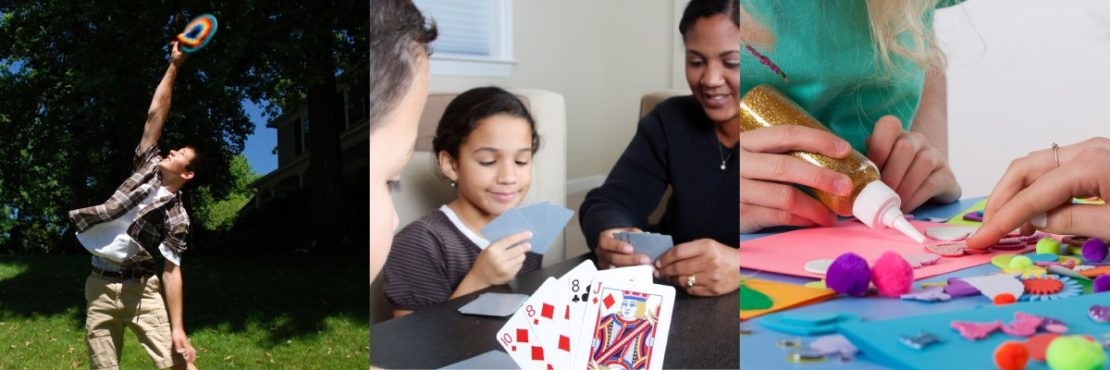
Something to keep in mind...
Too many disorganized toys can overwhelm a child and discourage play. It’s a good idea to have out only the toys that support the area you are focusing on. It’s also good to rotate the toys so the child doesn’t get bored. A specified play area or table can help create structure and clarify activities.
Thanks Amanda!
